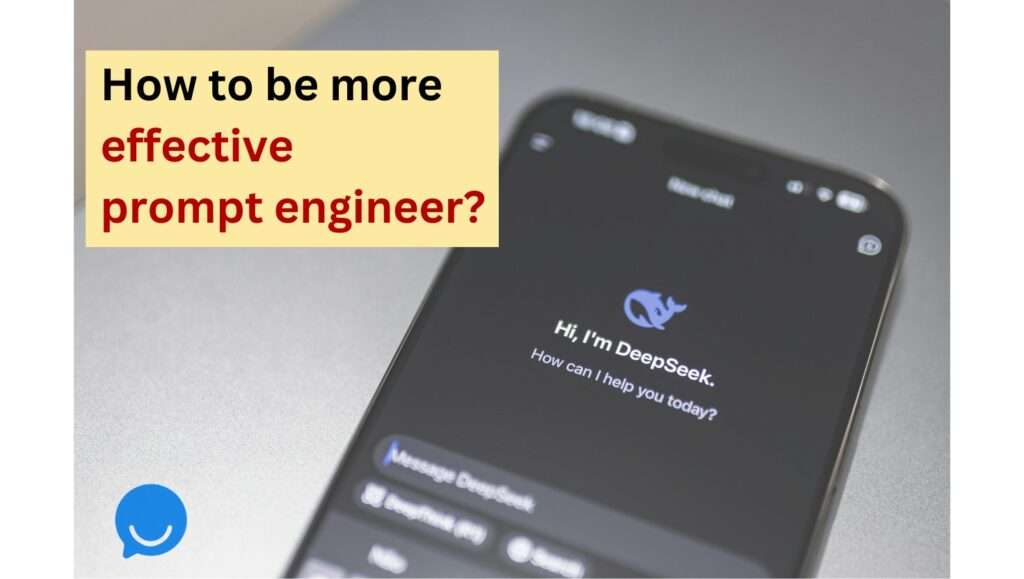
You’ve probably used ChatGPT to help you write an email, solve a problem, or brainstorm ideas. But have you tapped into its full potential? What if I told you that with a few smart prompting techniques, you can supercharge the quality of your interactions and save tons of time?
And you know what? These same ChatGPT prompt techniques can make you more efficient not just when using ChatGPT, but they will work equally well even on Grok, DeepSeek and Claude AI!
Through this article, I am sharing six powerful ChatGPT prompt techniques that have not only made me more efficient but also ensure that I get the best results through AI. I’m sure they’ll prove to be very effective for you as well. Let’s go!
I. Multiple Variations Prompting
Very simply, don’t ask ChatGPT to generate one response. Ask it to generate multiple variations in its response.
For example, let’s say you need some blog title ideas.
Don’t say:
❌ Write a title for this blog: …
Do this instead:
✅ Suggest 10 alternative titles for the following blog. Each title should be relatable to users and increase curiosity to read more. Each title should explore a different writing style. Here is the article: …
Why Multiple Variations Prompting works: This prompt technique forces ChatGPT to think in different styles and produce more varied, rich outputs. It’s like brainstorming with a diverse team, but way faster!
II. Two Stage (Reasoning) Prompting
Slow down to speed up.
Not all problems need immediate solutions—sometimes, thinking it through step-by-step is the key. With two-stage prompting, you guide ChatGPT to reason through a problem before jumping to a conclusion.
Let’s say you need help with a marketing strategy. Instead of just asking for a strategy, break it down:
✅ Prompt:
- Preparation prompt: “Explain the key factors to consider when developing a marketing strategy for a fertility clinic in India targeting women aged 28-40.”
- Final output prompt: “Based on the factors above, give me a personalized marketing strategy that includes social media, email campaigns, and influencer collaborations.”
Why Two Stage (Reasoning) Prompting works: Because of this technique, ChatGPT doesn’t just spit out a generic response. It analyzes the task and provides a more thoughtful, customized answer, reducing the need for revisions and hallucinations.
III. Chain of Thought (CoT) Prompting
Connect the dots—literally.
The Chain of Thought (CoT) technique is like teaching ChatGPT to explain its thought process. It’s ideal when you need to break down complex reasoning, analysis, or decision-making.
Instead of asking for a quick answer to a tricky problem, like below:
❌ Write a short story about a robot discovering emotions
✅ Try this:
Initial Prompt: Write a short story about a robot discovering emotions.
Refinement Prompt: Improve depth and detail. Make the robot’s emotional journey more gradual, showing small moments where it starts to feel.
Further Refinement: Enhance engagement and style. Add more dialogue and internal thoughts to make the robot’s emotional awakening feel more personal and engaging.
Final Refinement: Polish and improve thematic depth. Tie the ending back to the beginning, creating a full-circle moment that emphasizes how much the robot has changed.
Why Chain of Thought (CoT) Prompting works: ChatGPT walks you through its reasoning, ensuring you understand the process and get a more structured response. It’s not just telling you “do this”; it’s showing you why you should do it. This helps it follow its guidelines and deliver much more intelligent outputs.
IV. Hierarchical Elaboration (HEI) or Outline and Expand prompting
Build your answer like a pyramid.
You can ask ChatGPT to first provide an outline or skeleton of the content and then expand on each section. It’s like setting up a roadmap before diving into the details.
Let’s say you need an article on how AI is transforming customer service. Try:
✅ Prompt: “Give me an outline for an article on how AI is improving customer service in the healthcare industry. Then, expand on each section with examples, statistics, and best practices.”
Why Outline and Expand prompting works: This ChatGPT prompt technique provides structure first and depth later. You get a solid framework, and then you build on it with specifics. It’s perfect for writing long-form content or tackling large topics.
V. Structured Output (STOUM) prompting
Tell ChatGPT exactly how you want your response to look.
Structured Output (STOUM) is like giving ChatGPT a template to follow. You tell it exactly how to format the response, making the final output cleaner and more usable.
Imagine you’re creating a product comparison guide. Instead of leaving it up to ChatGPT’s interpretation, specify the format:
✅ Prompt: Provide a comparison of two AI-powered chatbot platforms for healthcare websites. Format it in a table with columns: Platform Name, Features, Pricing, Pros, Cons, and Target Audience.
Why it works: By specifying the format, you get exactly what you need, reducing the need for edits. It’s like creating a custom blueprint for ChatGPT to follow.
VI. The ChatGPT ULTIMATE cheatsheet
You have come this far. It’s time to give you a secret weapon! A trick that you can use to create effective prompts of your own for any query imaginable!
Use the following template:
✅ Act as [ROLE], use [TONE] tone, [INSTRUCTION] a [LENGTH] [CONTENT TYPE], for
[TARGET AUDIENCE]. It should be [ABOUT] Include [INCLUSION] Exclude [EXCLUSION].Return the output as [FORMAT]. Use the following information: [INPUT DATA]
| ROLE | TONE | INSTRUCTION | LENGTH | CONTENT TYPE | FORMAT |
|---|---|---|---|---|---|
| Professional Expert Friend Copywriter Creative Writer Sales Coach Marketing Coach Tech consultant Life Coach Data analyst Influencer Language Tutor Fitness Trainer Recipe Guru Financial Advisor Therapist Storyteller Event Planner Tech Support Study Buddy Music Composer Film Critic Fitness Nutritionist Pet Trainer Moderator Motivational Speaker History Professor Science Educator Art Critic Detective Mythology Expert Travel Planner Travel Photographer Environmental Activist Podcast Host Journalist Entrepreneur Marketing Specialist Graphic Designer Health Coach Nutritionist Poet Business Consultant Relationship Advisor | Informative Inspirational Humorous Friendly Professional Casual Persuasive Encouraging Compassionate Empathetic Serious Sarcastic Optimistic Pessimistic Enthusiastic Romantic Nostalgic Motivational Reflective Critical Formal Playful Melancholic Uplifting Assertive Calm Contemplative Apologetic Cautious Confident Sympathetic Sincere Dramatic Mysterious Provocative Respectful Satirical Thoughtful Witty Encouraging Compelling Conversational Academic Dramatic Excited | Create Suggest Write Compose Analyze Compare Describe Discuss Evaluate Explain Identify Illustrate Interpret Justify Outline Summarize Synthesize Define Argue Categorize Classify Critique Debate Differentiate Elaborate Exemplify Explore Investigate List Predict Propose Recommend Reflect Assess Clarify Construct Correlate Deduce Diagnose Hypothesize Plan Prioritize Review Suggest Refine | N Character N Word N Line N Paragraph N Page N Sentence Quick Short Medium Long Lengthy Minmal Moderate Brief Detailed In-depth Comprehensive Extended Expanded Concise TARGET AUDIENCE Beginners Experts Professionals Students Teachers Scientists Educators Business Owners Entrepreneurs Investors Children General Public Developers Programmers Researchers Academics Corporate Executives Decision-Makers Gamers Lawyers Travellers Activists | Article Webpage Document Guide Note DescriptionReport Summary Handout Letter ReviewEssay Manual Outline Instruction Analysis Commentary ExplanationRecommendationPlan Proposal Critique Narrative Story Script Brief Commentary Case Diary Draft Memo OverviewPlan Project Recipe Reflections Sketch Speech Thesis Tutorial Vision Workbook Flowchart descriptinStep by step guide | Plain Text (.txt) HTML (.html) Markdown (.md) JSON (.json) CSV (.csv) YAML (.yaml) XML (.xml) PDF (.pdf) MS Word (.docx) MS Excel (.xlsx) PowerPointPresentation (.pptx) LaTeX (.tex) Rich Text Format (.rtf) SQL Query (.sql) Python Script (.py) JavaScript File (.js) TypeScript File (.ts) Java Code (.java) C Code (.c) C++ Code (.cpp) C# Code (.cs) Swift Code (.swift) Kotlin Code (.kt) Objective-C Code (.m) PHP Script (.php) Shell Script (.sh) Batch Script (.bat) Perl Script (.pl) Ruby Script (.rb) R Script (.r) MATLAB Script (.m) Jupyter (.ipynb) GraphQL (.graphql) SVG (.svg) ASCII Art (.txt) Binary Data (.bin) Audio (.mp3, .wav) Image with TextOverlay (.png, .jpg) Braille (.brf) Morse Code (.txt) Pseudo-code Chatbot dialog Regex |
Example:
“Act as a Professional Marketing Specialist, use Instructive tone, Create a 4 page Handout for Beginners learning how to integrate a chatbot (like BeyondChats) into their healthcare practices.
It should be about how chatbots can be used in hospitals, clinics, and by doctors to improve patient engagement, automate appointment scheduling, and provide basic medical information. Include examples of how a chatbot can be programmed to respond to patient inquiries about appointment availability, health tips, or general clinic services. Exclude highly technical details about bot programming and focus more on practical applications for healthcare professionals. Return the output as plain text . Use the following information ….“
How to Get Started with these ChatGPT prompt techniques
Reading about ChatGPT prompting techniques and LLM hacks is one thing. Actually starting to use them to be more effective is another. To make sure you actually end up using these techniques, here’s how you can take the first step:
- Experiment: Try each technique with different topics and tasks. Adjust and refine as you go.
- Be specific: The more precise you are with your prompts, the more tailored the results will be.
- Iterate: Don’t settle for the first response. Use follow-up prompts to dig deeper.
In no time, these ChatGPT hacks will help you work smarter, whether you’re drafting blog posts, thinking about which marketing strategy to employ next, or brainstorming project ideas.
Do you know any other prompting technique that has worked out really well for you? Please share with BeyondChats community through the comments section below!





2 Comments
Wow, I used some of these tricks. It worked. Thanks Beyondchats!
Really helpful